Myanmar: Arriving in Yangon Rangoon
First Impressions of Burma: Yangon (Rangoon)
We arrived in Yangon just over an hour after leaving the tarmac at Bangkok’s International Airport. It was a very early flight and John and I had managed only about three hours sleep after meeting an interesting Fillipino woman, in the bar at the airport hotel, who we ended up chatting with into the early hours.
Thank you Air Asia for no delays. Getting through Burmese immigration was surprisingly easy. It was swift and efficient. We exited the airport to be met by our Longyi wearing hotel greeter, only twenty minutes after landing.
Whilst waiting outside for other travellers to clear customs and join us on the transfer bus, John was engaged in conversation with the many taxis drivers available to take you to your hotel of choice. John told them we’d organised a free transfer through the hotel, but still the local guys were happy to chat away discussing football, our home country and our plans whilst in Myanmar. John explained our rough itinerary to the taxis drivers, who all spoke good basic English, and they were a bit dismayed as to why we would want to spend three nights in Yangon, or Rangoon as it was once called. Their advice was, 2 days in Yangon is plenty.
It was then a short walk to our transfer vehicle which turned out to be a 1950’s rusty old bus. It made it across the city and we were at the Motherland Inn by around 11am. The heavens had opened on the way to the hotel and, as we learnt, it was going to be the weather of choice for our three nights here. We were glad of the initial downpour as it seemed to stop the noxious fumes, bellowing out of the very old vehicles chugging around town, from seriously making our tired eyes sting and weep.
Our Yangon Hotel
The hotel turned out to be a bit of a poor show. Although the staff were helpful, funny and chatty. As we had booked late, the day before we left Bangkok, we ended up in a corner room with no aircon and with a shared bathroom and toilet down the corridor, all for US $23 per night, which came as a bit of a price/quality shock given our other accommodation choices as part of our around the world trip thus far.
We were prepared to pay more but there was nothing else available and the hotel was full even though it was low season, plus our hangovers and the excessive petrol fume inhalation meant we couldn’t be bothered moving and we hadn’t sourced any local currency yet for a taxi. The hotel was also a lot more expensive than our 2010 guide book had indicated, we’d see if this hotel price inflation would continue throughout our 16 day trip around Myanmar and by how much prices had risen for other things since publication.
It didn’t really get any better for us during our time here in Yangon. The hotel was very busy, so you felt a little like tourist cattle being guided through your Yangon experience. On the upside though you aren’t short of drinking partners, as there is nothing to do of an evening, as internet access is painfully slow and things close early. The hotel was also a little far out of the main downtown area and a 2000 Kyat taxi or a twenty minute walk was required to get anywhere.
Perhaps the grey wet weather and our tiredness set us off on a bad roll, but we never really recovered. Our first impressions of Yangon was a cross between India and China, though nowhere near as busy or bustling. When we both visited India for the first time we had a similar feeling, but after three days we both fell in love with the place, hopefully we would feel the same about Myanmar given time. In certain places around town you feel like you have been whisked back to the 1950s /60s looking at the decor and electrical wiring, and lack of investment. We didn’t really get Yangon, but sometimes it’s difficult on arrival to get under the skin of a place in a such a short time.
Kyat Exchange Rate for Dollars
Before arriving in Burma, we had purchased a guide book as some of the hotels don’t publish their room rates on the internet (and most budget hotels don’t have a web site at all) and we wanted to get an idea of prices. We needed to know how much US$ to take into the country.
There are no foreign ATM’s or cash withdrawal services available in Myanmar for foreigners to use. Foreigners must also pay for all hotels, flights and train tickets in US dollars, although you use local currency for buses and almost everything else. The local currency is the Kyat, and the exchange rate you get varies from around 850 to 900 kyat for one dollar, depending on where you exchange your dollars and in some cases the quality and value of the bills.
Most hotels offer OK rates if you can’t be bothered heading to a bank, but you will get better rates at the banks. Also money changers on the street will approach you. Your dollar bills must be in pristine condition as they will be inspected thoroughly, no bends. It’s probably best to get brand new dollar bills. Some hotels offered us exchange rates at 820 or 840 but we’d just refuse these rates and negotiate. The worst rate we got was 850.
Thankfully, we had brought a few extra dollars, and our flashpacking budget was quite healthy as we were both excited to be visiting and hoped to do a quite a few excursions whilst touring around the country.
Getting around Yangon by Taxi
It was not until about three in the afternoon on our first day that the rain slowed enough for us to venture out. We decided on a walk from the hotel to Sule Paya in the centre of downtown. This Paya (Paya is the Burmese word referring to any holy place – it translates literally as “holy one”) is a 2000 year old holy temple which sits on a roundabout in central Yangon. It’s base is surrounded by little shops, the majority of which are occupied by local fortune tellers, who for a few thousand kyat, will stare at your palm and look up your charts and tell you what lies in store for you. I’m guessing this is quite a lucrative business based on their reliance of computers to assist with the readings, and the fact that they are quite an expensive luxury for most in Burma.
John couldn’t miss the chance. The next two years are going to be good for him, he will have a long life into his seventies and he needs to drink less alcohol. I could have told him the last one. He needs to take up meditation and will have some minor health issues between the age of 43 and 50 (who doesn’t), he is also apparently kind, generous and caring – hmmmmm. I was not convinced at all and it sounds exactly like a reading I had from Gypsy Petrulengo at the end of Blackpool pier many years ago.
Around the central temple roundabout you will also find a couple of other impressive buildings in the form of the City hall and the Immanuel Baptist church. These sit along the east side of the temple where you will also find the Mahabandoola Gardens. There are some large and magnificent examples of Victorian architecture around Yangon, some of the most spectacular are abandoned and decaying but still the scale and craftsmanship is still very impressive.
Walking around Yangon is tricky, the pavements – where they are not occupied with stalls and seating – are treacherous with drain covers missing every few yards. You could easily find yourself knee deep in rain and waste water if your’e not careful. We found in most places it was easier to walk by the roadside once the storm water had receded from its edges. We’re not great lovers of travelling by taxi, but here it was necessary; after dark with power-outs and rain it was just so much quicker to get around town and to be fair we didn’t feel like we were missing that much.
The next day we went off first in search of our train tickets, so we naturally went to the main railway station on the northern edge of downtown. We got a taxi as the rain was pouring down (again) and 2000 Kyat later, plus the 100 kyat fee for the taxi to enter the drop off area, we were at the station. We queued at what we thought was the ticket office – not so as it turned out. As we were booking tickets more than two days in advance we needed to go to the booking office around the corner opposite the Sakura building. We made it there and entered the strangest looking ticket booking office we have ever encountered.
The place was deserted but consisted of about twenty windows all with staff behind them. As our Burmese script reading had not yet been honed we merely rocked up to the first one we came across. As it became clear to the member of staff that we wanted to book the sleeper train to Mandalay, we were told we needed to go to another window further down. It took about ten minutes in the end, trying to converse with the staff by using pen and paper, but after having handed over $33 USD each we clutched our sleeper reservation to Mandalay in two days time. Nobody we spoke to on our entire trip around Burma had taken a train journey, but we thought how bad can it be, we hoped it was a lot better than the dark and smelly Myanmar train booking office.
The rain had cleared by now so we chanced on a walk to the main Yangon attraction the wonderous Shwedagon Paya.
Stunning Shwedagon Pagoda
This sits a few kilometres north of downtown and we thought it would take us forty minutes to get there in crippling heat and humidity. We needed to shed a few pounds following our lazy two weeks on the flashpacking family holiday so we decided on a walk rather than a taxi.
We almost made it there dry, but a kilometre away the torrential rain began again. Fear not through we had our 50 cent Cambodian ‘pac-a-macs’ that had yet to be used. We slipped them on and continued our drizzly journey up the final hill with some umbrellas we’d purchased at the enormous Yangon market the previous day.
We quickly realised why the macs were so cheap, they were thinner than cling film, and less robust; so within five minutes we were a picture of a soggy mess of shredded plastic. Drenched, we darted into a cafe opposite the southern entrance to the Paya and had a beer or two waiting for the downpour to abate. This gave us an entertaining hour watching the locals and monks visiting Happy Land. We never found out what HappyLand was but we were happy to see the locals being happy going in, oh and the man on stilts was a gas too.
We decided to enter our own HappyLand as we had our first experience with betel nut, a nut from the areca palm. This is hugely popular throughout Myanmar and you see blood coloured spittle marks on the ground everywhere, where people have spat out their red nut stained saliva. The nut is wrapped in a leaf after first being coated with some lime paste (not the citrus variety the other one with calcium) and a few other ingredients added before being wrapped up in the leaf. You pop it in your mouth and chew until your mouth is full of red salvia then you have a good old spit. We tried quite a lot of it, and it does give you a buzz which we would liken to drinking a few cans of Red Bull, not sure about the taste though or the affect of the lime on your teeth, looking at some of the dentistry of the heavy chewers we met here.
Suitably lifted under the betel influence, we made our way up the steep steps barefoot towards the Paya at the top of the hill. The steps up are lined with stalls selling religious artefacts and offer a wonderful atmospheric introduction to the treats that lie at the top. Especially the $5 entrance fee that foreigners are slapped with as you reach the top of the stairs. We tried to shuffle past the ticket inspectors but were rumbled within seconds and had to hand over our dollars and receive our dated stickers. This would be the first of many entrance fees which goes directly to the government, but I will leave my thoughts on that for later blogs.
You are greeted with your first glimpse of the mighty golden Zedi (stupa). It is immense and dominates the whole complex, but once its charm has you calmed you can begin to cast your eyes around the other treats which surround it. These comprise of dozens of smaller zedi, shrines, temples and pavilions.
We managed around three circuits (walk round the Buddhist structures clockwise so as not to offend) of the complex and could have easily done more watching the Buddhists in prayer, the monks ambling around in groups and the general serenity of the place despite it being filled with hundreds of worshippers and a handful of tourists including us.
We have other things we wanted to get to see in Yangon but all were cut short as the weather for our last day got even worse so a visit to the Inya lake and Aung San Suu Kyi house where she spent years under house arrest will have to wait till our return.
We’re sick of Yangon, or are we homesick?
Yangon was a poor start to Myanmar for us and we really did not find anything charming about the place in our first few days with the exception of the Pagoda and some of the people we met. Good restaurant food was extremely difficult to find, and unless you’ve got a top end budget, you are probably better off going budget or street food. We found little excitement or taste in dining at mid-range priced establishments. John also picked up a mild case of food poisoning from somewhere, his first encounter of such after dining out for over 7 months. Apparently he wasn’t alone, as others we met along the road whilst touring Burma told us of similar experiences in Yangon, when sharing their travellers tales. I guess I should have realised when I discovered a pack of half used diarrhoea tablets in our shared bathroom on the first day.
Transport was also a little more expensive and difficult compared to other Asian countries. But we were not ones to give up, so off we went heading north to Mandalay.
Will our overnight train journey to Mandalay be as dank and depressing as the ticket office, only time would tell. At this point, I’m not sure whether or not we’ll be leaving Myanmar early, but we’re both feeling a little homesick after recently saying goodbye to our family in Bangkok and Yangon isn’t helping us shake this feeling.


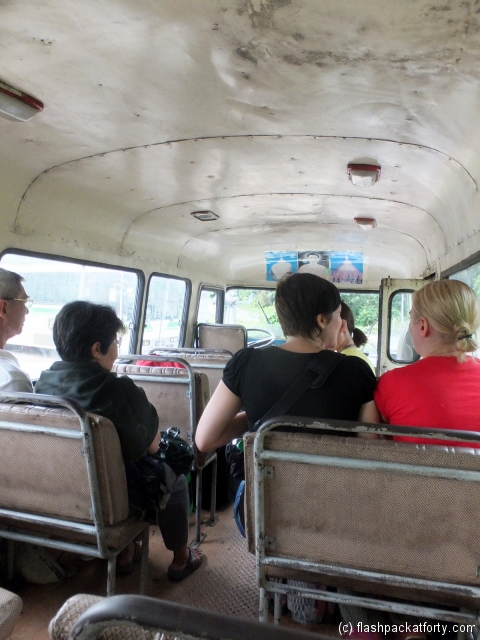
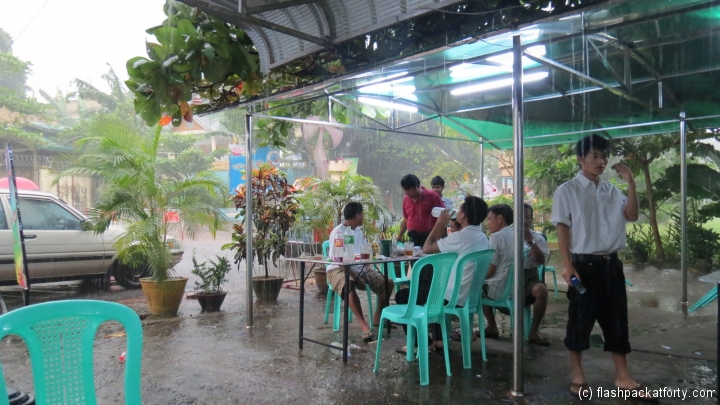
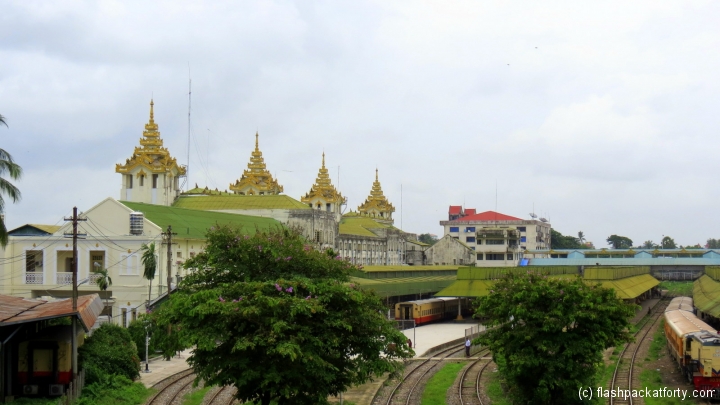
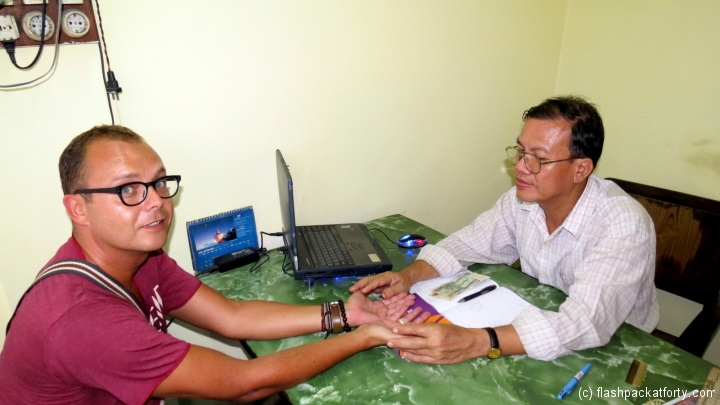
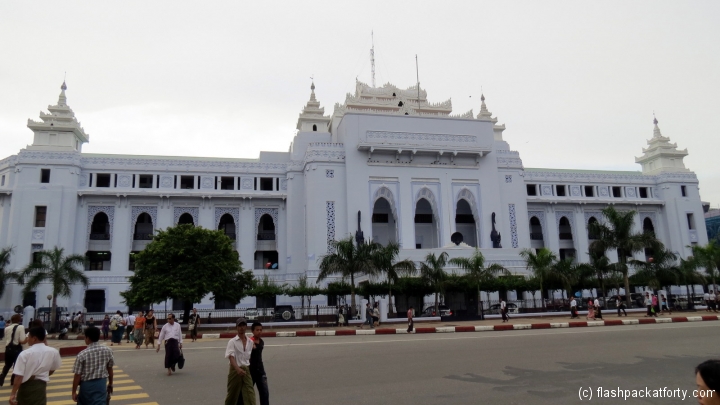

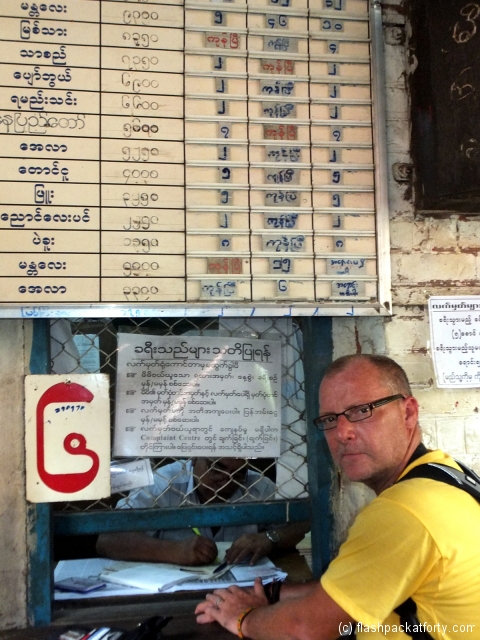

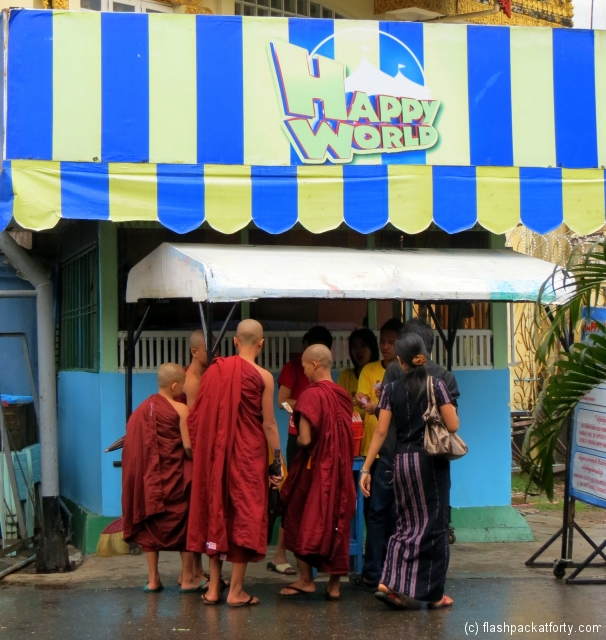
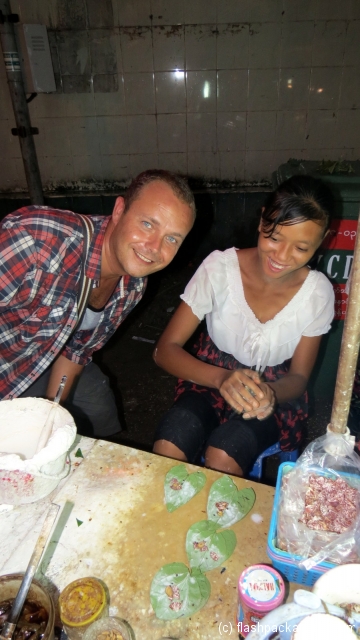
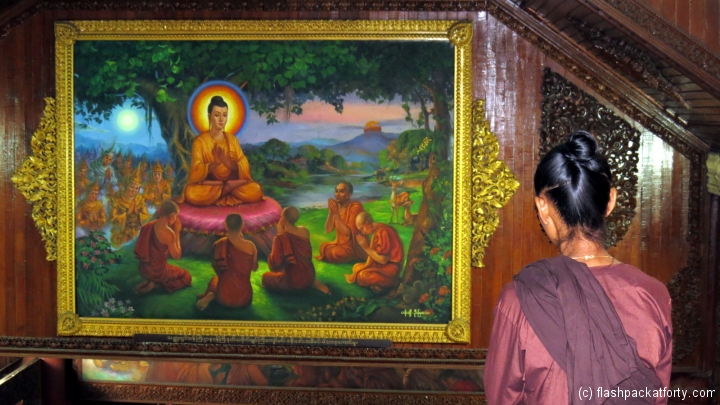
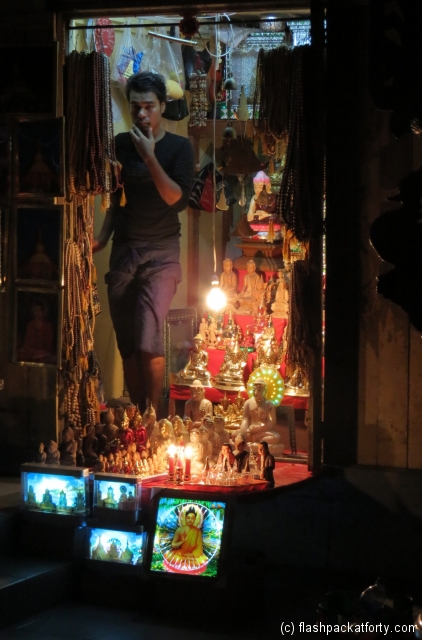
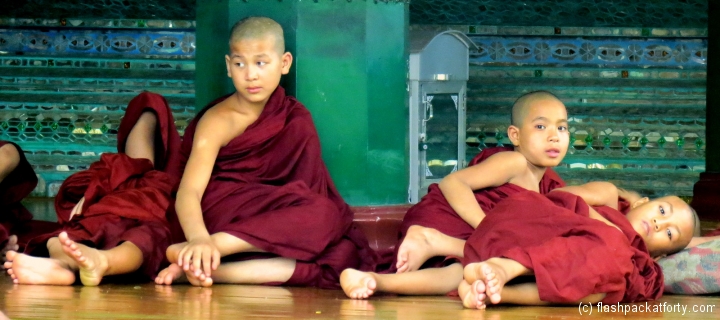
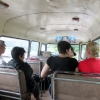

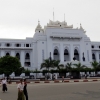
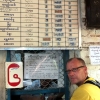
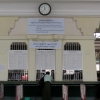

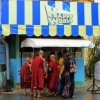
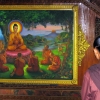
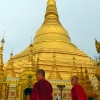
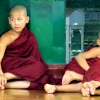

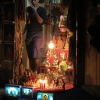
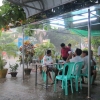
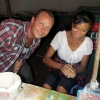

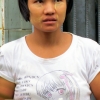
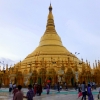
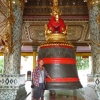
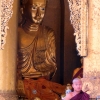

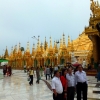
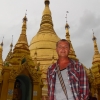
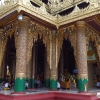
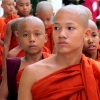
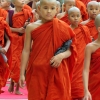
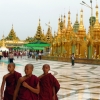
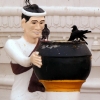
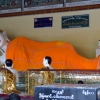


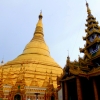
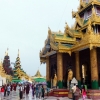
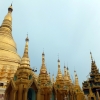

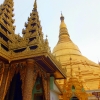
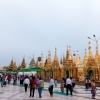
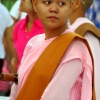
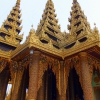
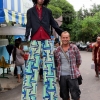
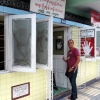
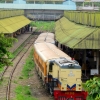
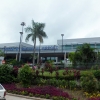
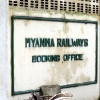






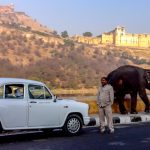
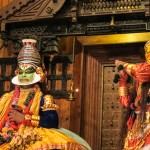

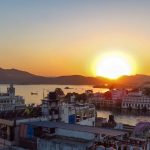
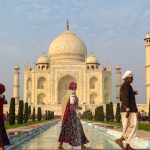
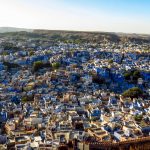


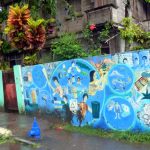
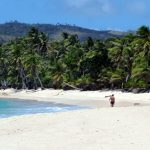
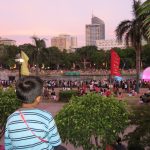
Believe me or not, but going to Burma has been always my dream. I might make it come true in December if everything goes well. I’m pretty excited especially after reading your post. I am glad you liked the place. How about the food? Is it more like South-East Asia food?
It was our first visit to Myanmar, and we were initially disappointed on our arrival in Yangon (I think this maybe because of the weather as we like to walk around and get amongst things – which wasn’t possible) However, everyday we spent in Myanmar our appreciation and understanding grew. It was a great trip and we enjoyed visiting Burma. I’m sure you will have a great time, and I think now is great time to visit before tourism explodes here. The food is OK, but not amazing, but the people and the country more than compensate for this. Its a mix of Indian, Nepalese and Chinese, with plenty of vegetarian dishes.
Hi Agnes, you’ll struggle to stay under your normal $25 a day budget in Myanmar. Click my link and you’ll get some information on local hotel prices. We did our best but still had to budget on $50. Elli
I’m leaving in 2 days for 2 weeks in Burma, and your nice views help me visualize what I’ll be encountering. I’m wondering about 2 things: here in California I wear shorts nearly all the time, but in Burma, knees should be covered by long pants or longys, right? And in entering any holy place, I have to remove shoes/socks – but are they safe left outside or should I carry them with me?
Ralph, the knees thing only really is an issue when you are visiting temples. I managed in long shorts which ‘just’ cover my knee the whole time and never got into any trouble. Yes shoes are safe outside the temples, in fact the whole of Burma always felt very safe to us. Have a great trip
this is very useful! I am going to Myanmar this December and hope it will be one of my best trips 🙂 love this blog 🙂